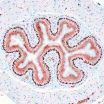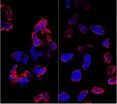(Press-News.org) TORONTO, July 10, 2014 – For the first time, researchers have access to detailed information about how an urban Aboriginal population in Canada uses health care. A new study, called Our Health Counts, uses this health database to clearly demonstrate the unique challenges faced by urban Aboriginal people in Canada – according to researchers at St. Michael's Hospital.
The findings, published today in BMJ Open, illustrate striking disparities between urban First Nations individuals and the general population.
Researchers interviewed 554 First Nations adults in Hamilton, Ont. – chosen for its large Aboriginal population and strong infrastructure of Aboriginal community health and social services. Researchers collected data for factors that influence a person's health such as poverty, illness and income for Hamilton's First Nations population.
"Compared to Hamilton's general adult population, we found elevated emergency room use, multiple barriers to health care access and significant rates of chronic disease among urban Aboriginal adults," said Dr. Michelle Firestone, an associate scientist with St. Michael's Hospital's Centre for Research on Inner City Health.
More than 10 per cent of First Nations adults visited the emergency room six times or more in the previous two years – only 1.6 per cent of Hamilton's general adult population could say the same.
"Hamilton has extensive health and social services but 40 per cent of respondents felt their access to health care was either fair or poor," said Dr. Firestone, who holds a PhD in public health. "This shows geography is not the only health care barrier for First Nations people."
Almost half of respondents reported that long waiting lists to see a specialist were a barrier. Other common barriers included not being able to arrange transportation; not being able to afford direct costs or transportation; services not covered by non-insured health benefits and lack of trust in health care providers.
More than 60 per cent of Aboriginal people living in Ontario live in urban areas. An increasing number of First Nations individuals are moving to urban centers to seek better housing, employment and education opportunities and for the services and amenities available.
The most common chronic conditions of Hamilton's First Nations adults included arthritis (30.7 per cent), high blood pressure (25.8 per cent), asthma (19 per cent) and diabetes (15.6 per cent).
Among First Nations adults living in Hamilton:
73 per cent of respondents reported an upper respiratory tract infection in the past 12 months
25 per cent reported having been injured over the past 12 months
78 per cent earn less than $20,000 per year
70 per cent live in the city's lowest-income neighbourhoods
Aboriginal people are often excluded, unidentified, or under-represented in most Canadian health information databases. Our Health Counts fills this health information void by using respondent-driven sampling – a research method used to recruit hidden or stigmatized populations by relying on participants to identify the next wave of study recruits. Our Health Counts is the first respondent-driven sampling of urban First Nations people in Canada.
"Our Health Counts is a significant contribution to public health," said Dr. Firestone. "This data will have important implications for health service delivery, programming and policy development. It should directly inform strategic directions and improve health of urban Aboriginal people in Ontario."
INFORMATION:
This project was funded by the Ontario Federation of Indian Friendship Centres, the Ministry of Health and Long Term Care Aboriginal Health Transition Fund.
About St. Michael's Hospital
St. Michael's Hospital provides compassionate care to all who enter its doors. The hospital also provides outstanding medical education to future health care professionals in 27 academic disciplines. Critical care and trauma, heart disease, neurosurgery, diabetes, cancer care, care of the homeless and global health are among the hospital's recognized areas of expertise. Through the Keenan Research Centre and the Li Ka Shing International Healthcare Education Centre, which make up the Li Ka Shing Knowledge Institute, research and education at St. Michael's Hospital are recognized and make an impact around the world. Founded in 1892, the hospital is fully affiliated with the University of Toronto.
For further information, or to schedule an interview, please contact:
Geoff Koehler
Media Relations Adviser
St. Michael's Hospital
koehlerg@smh.ca
416-864-6060, ext. 6537
Urban Aboriginal people face unique health challenges
2014-07-10
ELSE PRESS RELEASES FROM THIS DATE:
The millennial tofu surprise
2014-07-10
While Tofu is considered a healthy source of protein, that's not why the Millennials are eating it, according to a new study to be presented at Tops Club Inc.'s annual International Recognition Days convention July 10th in Milwaukee.
Tofu's new champion recruits are 20-something women who want dishes that are quick, easy to cook and that can help keep them trim. "They basically seem to care less about any health benefits of Tofu," said lead Cornell researcher Brian Wansink, "They eat it to look good and because it's quick to cook and it's filling."
The study of 502 ...
Research reveals how key controller protein is switched on
2014-07-10
New research has uncovered how a complex protein pivotal in the development of cancer, viral infection and autoimmune diseases is activated. The discovery answers a key question about one of the most widely-researched proteins in human biology, which has been the subject of tens of thousands of research papers and millions of pounds in research funding.
Jiazhen Zhang, a research student in Professor Sir Philip Cohen's laboratory at the University of Dundee, uncovered how the protein complex, called NF-κB, is activated. The results are published today in the Biochemical ...
Mouse study: Natural birth may strengthen the immune system
2014-07-10
A number of studies suggest that children delivered by Caesarean section have a different intestinal flora than children delivered by natural birth. But it is still unknown why this is the case and what it means for the immune system. Researchers from the Faculty of Health and Medical Sciences therefore decided to scrutinise the impact of birth on the development of the immune system in a study of newborn mouse pups.
The study shows that pups delivered by Caesarean section had developed a lower number of cells that strengthen the immune system, says Camilla Hartmann ...
Vasectomy may increase risk of aggressive prostate cancer
2014-07-09
Boston, MA -- Vasectomy was associated with a small increased risk of prostate cancer, and a stronger risk for advanced or lethal prostate cancer according to a new study from Harvard School of Public Health (HSPH). The researchers found that the association remained even among men who received regular PSA screening, suggesting the increased risk of lethal cancer cannot be explained by diagnostic bias. It is the largest and most comprehensive study to date to look at the link between vasectomy and prostate cancer.
The study appears online July 7, 2014 in Journal of Clinical ...
Bacteria found in bladders of healthy women differ from those in women with incontinence
2014-07-09
Bacteria found in the bladders of healthy women differ from bacteria in women with a common form of incontinence, according to researchers from Loyola University Chicago Stritch School of Medicine.
These findings, published July 9, 2014, in the American Society for Microbiology's online journal mBio, suggest that bacterial communities may play a role in female urinary health.
"Urgency urinary incontinence (UUI) is a common, yet poorly understood, condition with symptoms similar to urinary tract infections," said Alan Wolfe, PhD, co-investigator and professor of Microbiology ...
NASA finds friction from tides could help distant earths survive, and thrive
2014-07-09
As anybody who has started a campfire by rubbing sticks knows, friction generates heat. Now, computer modeling by NASA scientists shows that friction could be the key to survival for some distant Earth-sized planets traveling in dangerous orbits.
The findings are consistent with observations that Earth-sized planets appear to be very common in other star systems. Although heat can be a destructive force for some planets, the right amount of friction, and therefore heat, can be helpful and perhaps create conditions for habitability.
"We found some unexpected good news ...
NASA MESSENGER and STEREO measurements open new window into high-energy processes on the sun
2014-07-09
Understanding the sun from afar isn't easy. How do you figure out what powers solar flares – the intense bursts of radiation coming from the release of magnetic energy associated with sunspots – when you must rely on observing only the light and particles that make their way to near-Earth's orbit?
One answer: you get closer. NASA's MESSENGER spacecraft -- which orbits Mercury, and so is as close as 28 million miles from the sun versus Earth's 93 million miles -- is near enough to the sun to detect solar neutrons that are created in solar flares. The average lifetime for ...
New recreational travel model to help states stop firewood assisted insect travel
2014-07-09
RESEARCH TRIANGLE PARK, NC, July 9, 2014 – The spread of damaging invasive forest pests is only partially powered by the insects' own wings. People moving firewood for camping can hasten and widen the insects' spread and resulting forest destruction. A new U.S. Forest Service study gives state planners a tool for anticipating the most likely route of human-assisted spread they can use to enhance survey and public education efforts.
The study, "Using a Network Model to Assess Risk of Forest Pest Spread via Recreational Travel," was published July 9 in the journal PLOS ...
CNIO scientists discover that pluripotency factor NANOG is also active in adult organisms
2014-07-09
Scientists from the Spanish National Cancer Research Centre (CNIO) have discovered that NANOG, an essential gene for embryonic stem cells, also regulates cell division in stratified epithelia—those that form part of the epidermis of the skin or cover the oesophagus or the vagina—in adult organisms. According to the conclusions of the study, published in the journal Nature Communications, this factor could also play a role in the formation of tumours derived from stratified epithelia of the oesophagus and skin.
The pluripotency factor NANOG is active during just two days ...
No extra mutations in modified stem cells, study finds
2014-07-09
LA JOLLA-The ability to switch out one gene for another in a line of living stem cells has only crossed from science fiction to reality within this decade. As with any new technology, it brings with it both promise--the hope of fixing disease-causing genes in humans, for example--as well as questions and safety concerns. Now, Salk scientists have put one of those concerns to rest: using gene-editing techniques on stem cells doesn't increase the overall occurrence of mutations in the cells. The new results were published July 3 in the journal Cell Stem Cell.
"The ability ...




